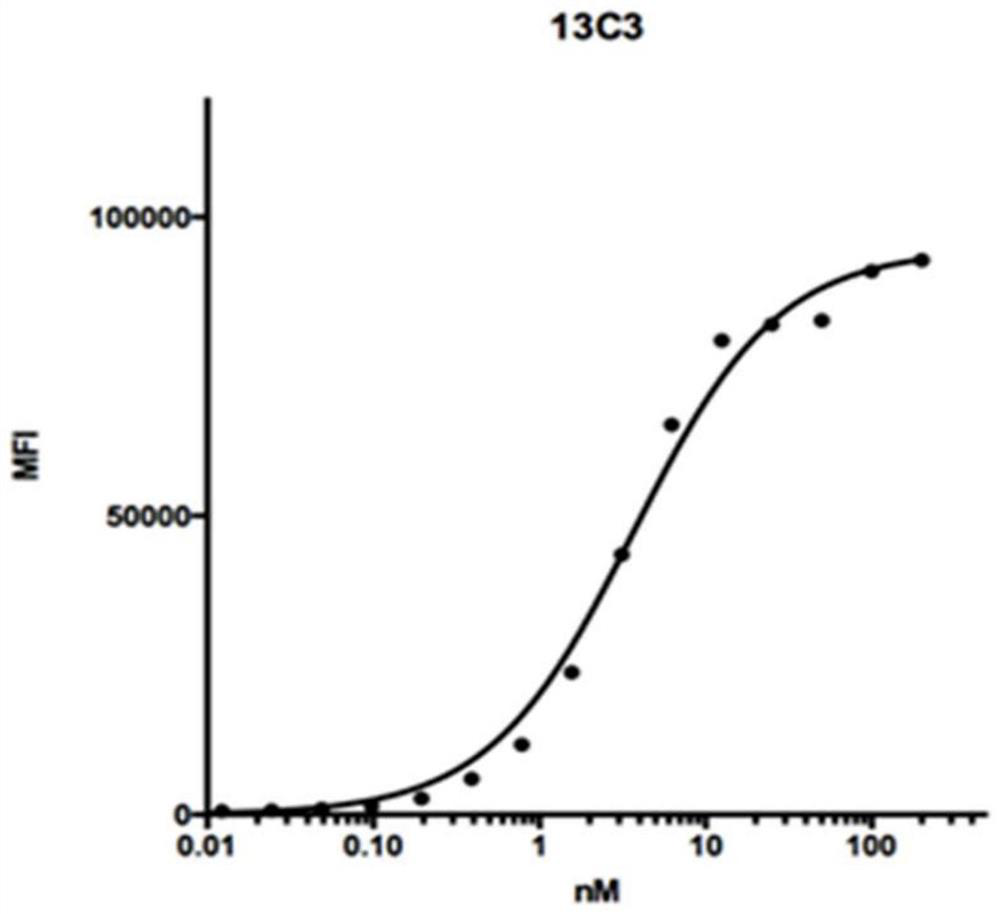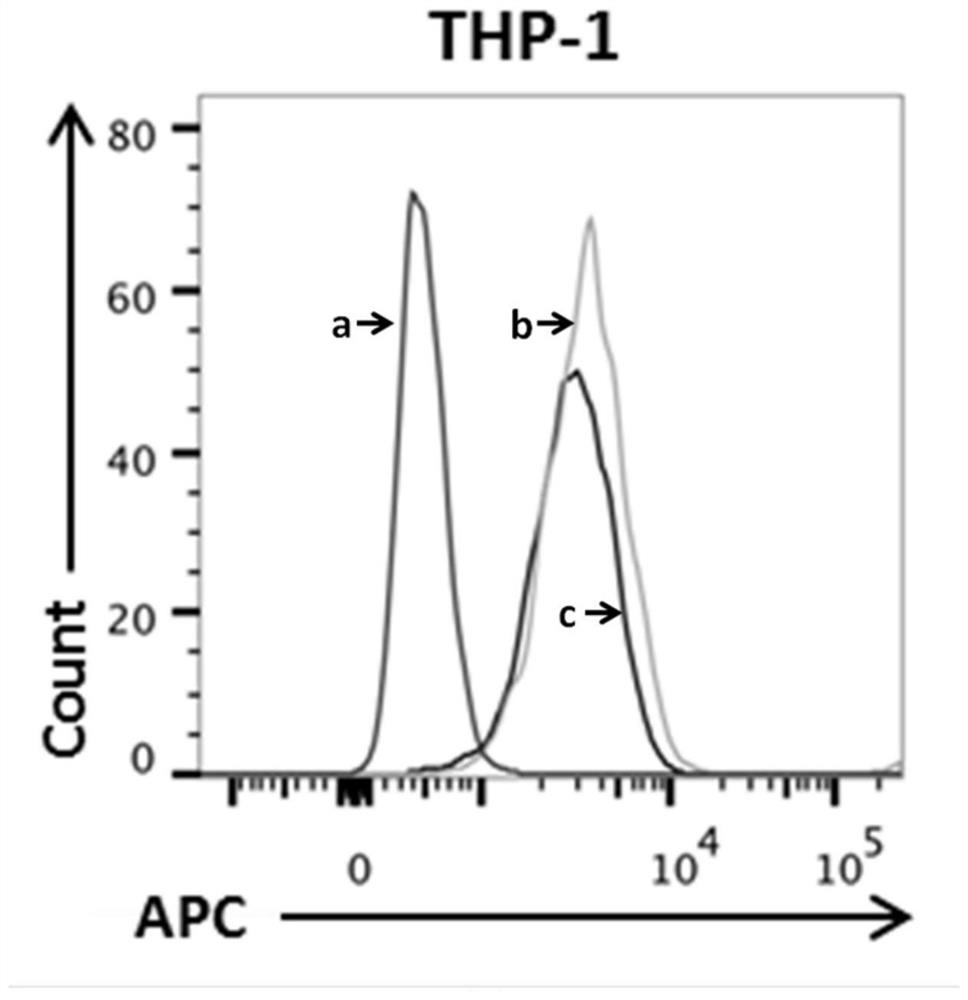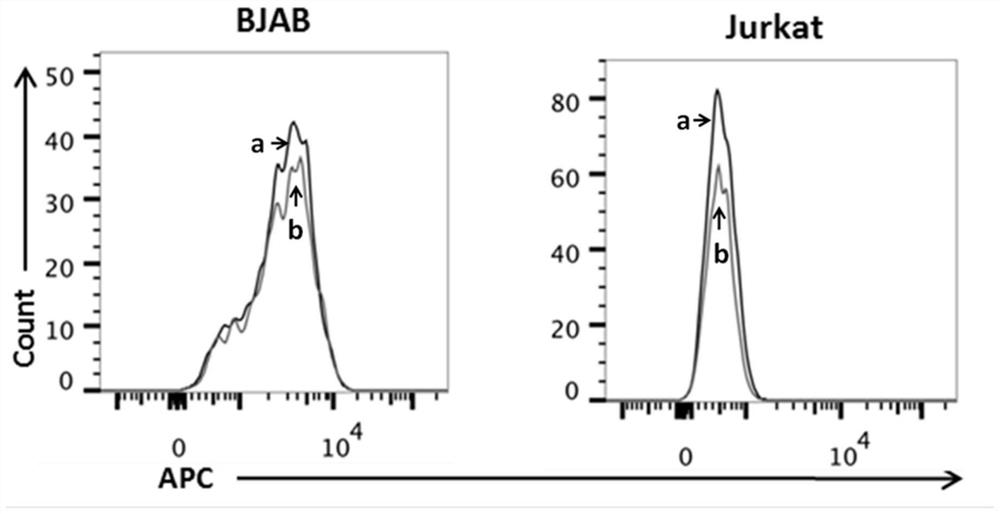A mouse anti-human cd123 monoclonal antibody and its application
A monoclonal antibody, mouse anti-human technology, applied in the field of immunology, can solve the problems that CD123 antibody does not achieve the expected therapeutic effect and is not suitable for clinical treatment, etc., and achieve the effect of strong binding specificity
- Summary
- Abstract
- Description
- Claims
- Application Information
AI Technical Summary
Problems solved by technology
Method used
Image
Examples
Embodiment Construction
[0049] The present invention will be further described below with reference to specific embodiments, but the protection scope of the present invention is not limited.
[0050] 1. Mouse Hybridoma Monoclonal Antibody Screening
[0051] The 3T3 cells transfected with lentivirus and stably expressing human CD123 protein on the cell membrane were used as the immunogen. IL3RA (encoding human CD123 protein) was constructed. Balb / c mice were immunized by intraperitoneal injection, 1×10 7 3T3 / CD123 + Cells / time, booster immunization was performed on the 3rd and 5th weeks after the primary immunization, respectively, and the mouse tail blood was collected on the 8th day after the booster immunization. Serum, diluted in PBS to different concentrations: 1:200, 1:400, 1:800, 1:1600, 1:3200, 1:6400, 1:12800. Collect 3T3, 3T3 / CD123 + Cells, washed once with PBS, and counted with 1 × 10 cells per sample 6 100 μl of serum at different dilutions were added to the cells. In the negative co...
PUM
| Property | Measurement | Unit |
|---|---|---|
| aggregation | aaaaa | aaaaa |
Abstract
Description
Claims
Application Information
 Login to View More
Login to View More - R&D
- Intellectual Property
- Life Sciences
- Materials
- Tech Scout
- Unparalleled Data Quality
- Higher Quality Content
- 60% Fewer Hallucinations
Browse by: Latest US Patents, China's latest patents, Technical Efficacy Thesaurus, Application Domain, Technology Topic, Popular Technical Reports.
© 2025 PatSnap. All rights reserved.Legal|Privacy policy|Modern Slavery Act Transparency Statement|Sitemap|About US| Contact US: help@patsnap.com



